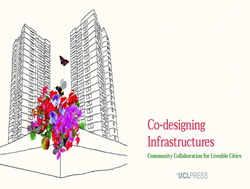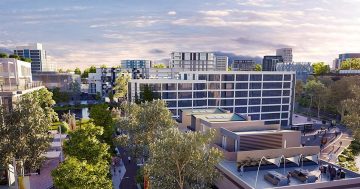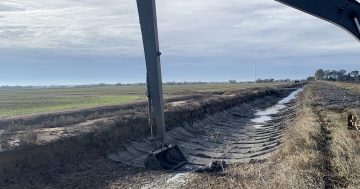They are critical to urban life, but we don’t often think about infrastructures but maybe it’s time we should say *Professor Sarah Bell, Dr Charlotte Johnson, Dr Kat Austen, Gemma Moore and Dr Tse-Hui Teh
 The bath in Hellene’s flat is a source of concern to her.
The bath in Hellene’s flat is a source of concern to her.
Hellene (a pseudonym) is a social tenant on the Meakin Estate in south London and her flat, like most of her neighbours’, comes with a bath but not a shower. When her children were young, they would happily share a bath, but now her teenager refuses and demands her own bath water.
We don’t often think about the infrastructure required to supply, remove and treat the water we put in our baths.
Hellene feels a shower would be less wasteful but lacks the space and means to add one. She also faces the disincentive that, as a tenant, she may have to reverse any changes she makes inside her flat if she moves out.
As a consequence, after her son has bathed, Hellene watches hot water disappear down the plug hole into London’s overburdened sewer system, before refilling the bath with more hot water for her teenager.
She is not on a metered supply so she does not pay for the extra bath water, but she says she finds it “depressing to see it go up and then down.”
The water for the bath in Hellene’s flat is heated in a boiler room which serves Hellene and her neighbours. The same system provides heating to radiators in each flat. The boiler runs on gas connected to London’s gas supply network, which in turn, is connected to pipelines that span Europe.
The future of our public housing towers
Hellene’s daughter’s very reasonable expectation of her own bathwater is easily accommodated by the water and energy networks that connect her flat to the estate, the estate to London, and London to rivers, groundwater and faraway gas fields.
And yet, when Hellene sees the water go up and down, she knows the changes in her household are having an impact somewhere else, and she feels bad about it.
Hellene sees the bathwater. The invisible systems that bring water and heat from somewhere else to make bathing possible are water and energy infrastructure.
Infrastructures are the sociotechnical systems that make cities work.
Water, energy, transport, data, and waste infrastructures supply the basic services needed for urban life. Infrastructures shape communities and the environment, and embody social and political values, though they remain largely unnoticed.
Infrastructures underpin economic and social activity, converting resources from the environment into a form that is useful and taking away waste materials and contaminants to keep people healthy and safe.
These include:
* Water infrastructure that collects and treats water from rivers and aquifers and distributes it to buildings and spaces across a city, then drains away dirty water, treating it and returning it to the environment.
* Transport infrastructure that moves people and goods around, using energy from fossil fuels, electricity and bodies.
* Energy infrastructure which converts energy in the wind, sun, other environmental elements or fuel reserves into electricity, heat or fuels that can be used by people and distributes it to where it is needed.
Planning floodproof cities
Waste infrastructure that collects unused, potentially dangerous materials, removes them from the urban environment, treats them and either returns material to the economy or to the environment.
Communication infrastructure which converts information into data that can be transmitted, received, stored and retrieved.
Infrastructures take care of people – at least those who live in wealthy, politically stable cities, with able-bodies and enough money to pay the bills.
Every morning, millions of people safely make a cup of coffee, take a shower, dress in clean clothes, check the weather forecast and get to school or work because of different forms of infrastructure.
Mostly, people in the Global North do not worry if the water is safe to drink and bathe in. They do not think about where it goes beyond the plug hole. At the flick of a switch, the kettle boils. The internet sends the news. The bus arrives at its destination.
Infrastructures are the background to modern lives.
Our new book tells the story of a research program designed to bring the power of engineering and technology into the hands of grassroots community groups.
Typically, people only notice infrastructure on those rare mornings when the power is off, the taps are dry or, more frequently, the internet is slow and the trains are delayed.
Infrastructure is most noticeable in cities where it has not been built, or has failed, which is often the case in the Global South. Infrastructure is acutely important to a household that does not have enough money to pay the bills.
People who use wheelchairs become experts in details of transport infrastructure, of which the able-bodied can remain ignorant. Cyclists become viscerally aware of infrastructure when a car comes too close to their bike in traffic.
Seeing the invisible vulnerable in our cities
A growing number of citizens are paying attention to infrastructure as essential to solving the climate emergency, improving air quality, cleaning up local rivers and making cities healthy and safe.
Infrastructures provide a form of community. Communities of infrastructure share connections to urban technical systems – for example, water, sewers, electricity, data and transport.
These systems form the background to the city, designed and managed by invisible experts, impersonal systems that enable urban life but form part of the unknowable modern world, bigger than everyday experience.
Communities of infrastructure open these black boxes, revealing connections between people, environments, governments and institutions.
In so doing, communities of infrastructure may find new modes of meeting everyday needs that support stronger, more nourishing relationships with each other and the local and planetary systems upon which they depend.
*This is an edited extract from the new open access, free to download book, Co-designing infrastructures: Community collaboration for liveable cities. It was written by Professor Sarah Bell, University of Melbourne; Dr Charlotte Johnson, Dr Kat Austen, Associate Professor Gemma Moore and Dr Tse-Hui Teh, University College London











